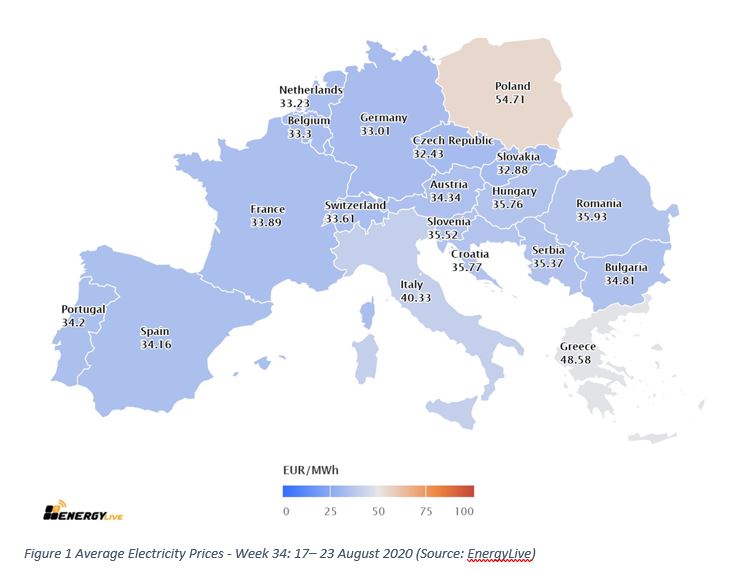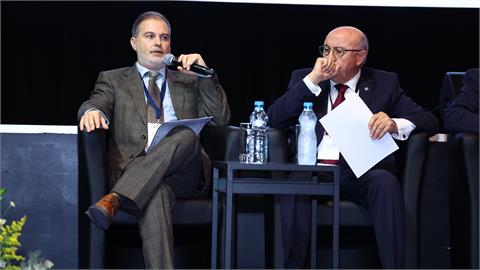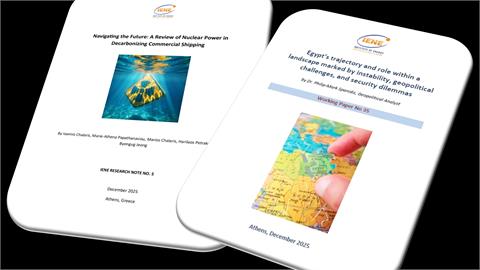The second part of August is proving to be less heat intensive than originally predicted. In this vein, during Week 34 (17– 23 August 2020) electricity demand fell across the SEE region. During this period, as cooling needs subsided, wholesale electricity prices declined notably in Central Europe, windpower generation receded moderately throughout the region, while lower precipitation affected the local hydropower yield, as weather remained sunny throughout the region.
These were the main forces behind electricity price formation in SE Europe last week. More specifically, milder weather in SE European region drove electricity demand lower in all SEE countries, except in Greece and Italy. Moreover, wholesale electricity prices in Central Europe fell by 1.5 – 3 €/MWh on average in comparison to Week 33, with prices converging approximately at 34 €/MWh. As a result, increased low-cost electricity flows from Central Europe were diffused through Hungary in the rest of SEE markets.

Prices in SEE region converged at 35 €/MWh with prices falling visibly in all regional markets, except in Greece and Italy, where they marked notable increases due to rising electricity demand. Greece and to a lesser extent Italy were also affected by the increased prices of LNG as a result of recovered demand in the industrial markets of South East Asia and also by obstructed US LNG cargoes in the Gulf of Mexico due to the two evolving storms Marco and Laura. The most notable price decreases were recorded in Bulgaria, Croatia and Hungary, where the average spot prices fell by more than 4.7%, 4.3% and 3.9% respectively, driven by lower electricity prices in Central Europe and by lower domestic and cross-border demand. Hungary marked the highest week to week drop in electricity demand which exceeded 11%. This combined to Hungary’s increased nuclear baseload availability, as Paks NPP return in operation at full capacity on Tuesday 8 August, reduced radically the country’s net electricity imports, allowing Hungary to diffuse low-cost electricity from Central Europe to SEE region.




